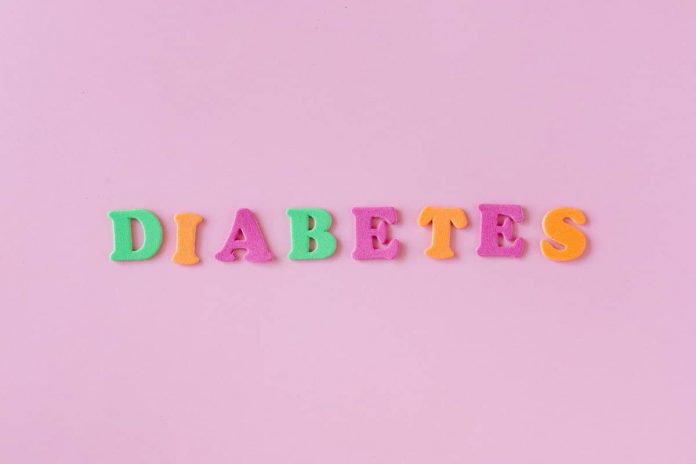According to healthcentral.com, over 177,000 adolescents and children have diabetes. Parents often worry about type 1 diabetes, but within the past 20 years, the number of children diagnosed with type 2 diabetes has skyrocketed. Childhood obesity is one of the major risk factors for type 2 diabetes, and the rise of childhood obesity has a major impact on the rise in type 2 diabetes in children today.
Both juvenile diabetes and type 2 diabetes can be effectively treated, although neither disease has a cure. For this reason, children must get treatment as quickly as possible. To ensure children get the treatment, they need quickly; parents need to be aware of the early signs of diabetes in children . Here is a closer look at type 1 diabetes, type 2 diabetes, and the signs for which parents should look.

Table of Contents
What is Type 1 Diabetes?
Type 1 diabetes is a condition often referred to as juvenile diabetes. The pancreas does not produce insulin in children with this type of diabetes, and Who must replace the missing insulin. This type of diabetes requires regular care, including blood sugar monitoring and the regular delivery of insulin. However, advances in technology make it easier than ever to manage type 1 diabetes.
Although the cause for this type of diabetes is unknown, researchers have found that the body’s immune system destroys the cells within the pancreas that produce insulin. Without insulin, glucose levels build up in the bloodstream, which may result in life-threatening complications if left untreated. Failure to treat this type of diabetes effectively could result in complications, including the following:
- skin conditions
- nerve damage
- eye damage
- heart disease
- kidney damage
- osteoporosis
- foot damage.
What is Type 2 Diabetes?
Type 2 diabetes used to be considered adult-onset diabetes, but more children than ever are diagnosed with this chronic condition. The condition affects the way the body metabolizes glucose. This type of diabetes occurs when the pancreas no longer produces enough insulin or if the body becomes resistant to insulin.
Insulin is essential for regulating glucose levels in the blood, and it helps ensure that sugar enters cells where it is used as energy. However, when the body resists insulin or does not produce enough, sugar starts building up in the bloodstream.
Certain risk factors can increase a child’s chance of developing type 2 diabetes. Risk factors include the following:
- Inactivity – Inactive children have a higher risk of developing this type of diabetes. Physical activity is important for regular weight and ensuring that the body turns glucose into energy.
- Race – Studies show that certain races, including Native Americans, African Americans, Pacific Islanders, and Asian Americans, have a higher risk for type 2 diabetes, although researchers are unsure why.
- Weight – One of the top risk factors for type 2 diabetes is being overweight or obese. Factors that may contribute to obesity in children include lack of activity, unhealthy eating, genetics, and in rare cases, medication conditions.
- Family History – If siblings or parents have type 2 diabetes, it significantly increases the risk of a child developing this type of diabetes.
Signs of Type 1 Diabetes in Children
Children with type 1 diabetes generally begin developing symptoms quickly. In most cases, these symptoms will show up in just a few weeks. Signs of diabetes in children to look for include:
- Intense Hunger – Since insulin is not moving into a child’s cells, the organs and muscles do not get enough energy. This results in intense hunger.
- Fatigue – Cells become sugar-deprived, which means they don’t get the energy they need, resulting in fatigue and lethargy.
- Excessive Thirst and Urination – Since sugar begins building up in the bloodstream, fluid is pulled out of body tissues. This often leaves children feeling excessively thirsty. Excessive thirst often results in frequent urination.
- Blurry Vision – High blood sugar may result in fluid being pulled away from the eye lenses, causing blurred vision.
- Weight Loss – Although a child may be eating more, he may lose weight quickly because the cells are not getting their energy sugar supplies. This symptom is one of the first diabetes symptoms in children notice.
- Irritability – Parents may notice that their child seems irritable or moody.
- Yeast Infections – The excess sugar in the bloodstream may result in yeast infections, such as genital yeast infections in girls or yeast-caused diaper rash in babies.
Type 2 Diabetes Symptoms in Children
While the signs of diabetes in children with type 1 diabetes generally develop quickly, the symptoms of type 2 diabetes often develop over time. Some children that have this type of diabetes display no symptoms. The following are common signs of type 2 diabetes in children:
- Increase in Thirst and Urination – As the body pulls fluid from tissues to deal with all the glucose in the bloodstream, an increase in thirst often occurs. Since children drink more, it also results in increased urination.
- Weight Loss – Children may lose weight as fat stores and muscle tissues shrink because cells no longer need the energy.
- Regularly Infections or Slow Healing – Your child’s ability to fight off infections and his ability to heal may be affected by type 2 diabetes.
- Increase in Hunger – Even after eating, children may complain of hunger since the body is not getting the energy it needs.
- Patches of Darkened Skin – Patches of darkened skin, specifically around the neck or the armpits, maybe a sign that your child is insulin resistant.
- Fatigue – Children often become fatigued or irritable easily because their cells fail to get sugar.
What to Do if Your Child Displays the Early Signs of Diabetes
If parents notice any early signs of diabetes in their children, it is important to have the child seen by their pediatrician. Even if your child does not display symptoms of diabetes, parents may want to have their child’s physician perform a diabetes screening if the child has multiple risk factors for diabetes.




